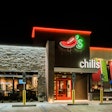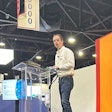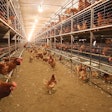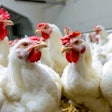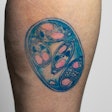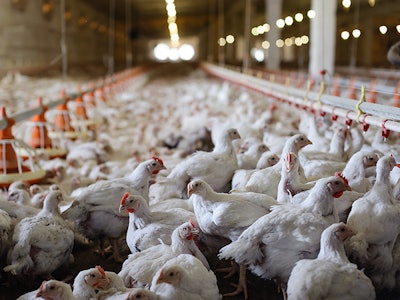
Collecting and monitoring information on the peaks and valleys of coccidiosis outbreaks in poultry could help producers identify better strategies to control the disease.
“Data drives accurate planning and better decision-making,” Francene Van Sambeek, DVM, Elanco technical consultant, said. “If you have data you can utilize, you’re going to make a lot better decisions about what coccidiosis control programs to use. If you don’t have that data, then, at best, you’re guessing.”
Coccidiosis is caused by protozoan parasites called coccidia that belong to the Eimeria genus. The disease is one of the most common causes of intestinal wall damage in poultry.
A recent assessment from Elanco’s global Health Tracking System analyzed coccidiosis data from 68,113 birds between January 2016 and December 2020.
Coccidiosis insights
Here are some of the insights from the assessment:
- Gross Eimeria acervulina (gAc) lesion scores showed peak incidence at 21 days of age, with the highest cycling occurring in the spring and the lowest cycling occurring in the fall.
- Gross Eimeria maxima (gMx) lesion scores showed peak incidence at 42 days of age, with the highest cycling occurring in the spring and the lowest cycling occurring in the winter.
- Microscopic Eimeria maxima (mMx) lesion scores showed peak incidence at 28 days of age, with the highest cycling occurring in the winter and the lowest cycling occurring in the summer.
Producers can use this data to look for anomalies in coccidiosis occurrence in their flocks.
“If I’m looking at a peak and it’s maybe more severe, but it’s in the springtime, that falls within our program parameters,” added Van Sambeek. Now if I saw that in the fall, which is usually our lowest time, then I would be more concerned.”
The study also looked at the most common anticoccidial feeding program types used by season and age.
- In starter feeds, the most-used program type included a weak chemical in winter and vaccines in spring and summer, followed by a combination of ionophores and chemicals in the fall.
- In grower feeds, the most-used program type included a combination of ionophores and chemicals in the winter, with ionophores used during the spring and summer and repeating the combination of coccidiostats in the fall.
- In finisher feeds, there is a steady decrease in cocci feed additive products used in ration 3 and 4. In 2021, where the average feeding program had 3.8 rations, only 46% of ration 3 diets had a cocci product in it, and in ration 4 that dropped to 6%.










